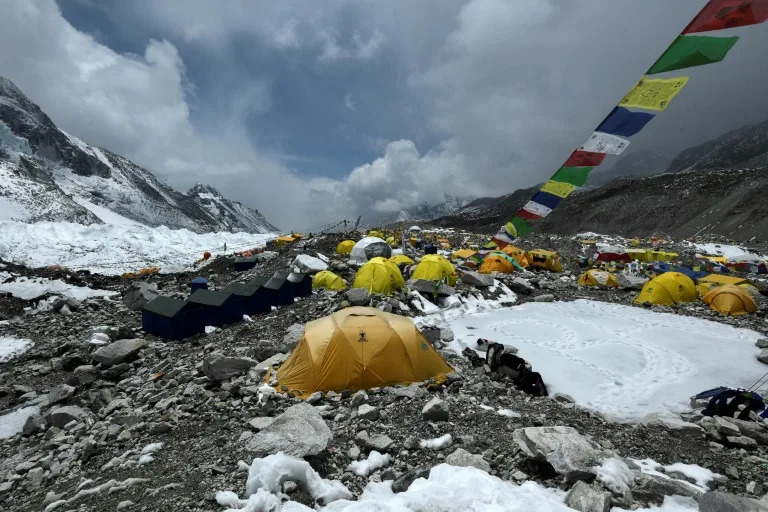créditos: Geshuang Chen/Handout via REUTERS
As temperaturas estavam entre os três graus negativos e os 10 graus positivos, a pior zona do termómetro para os alpinistas e montanhistas.
Foram resgatados, esta terça-feira, dia 7 Outubro, os 580 alpinistas que ficaram retidos, a quase 5 mil metros de altitude, no monte Evereste, no Tibete, após um intenso nevão no fim de semana, segundo a AFP,
Os nevões deste fim de semana suspenderam a emissão de licenças para entrar nos trilhos a caminho da montanha mais alta do planeta, mas o que já lá estavam tiveram dificuldade em voltar. Mais de 350 conseguiram chegar a salvo à aldeia mais próxima.
Villagers with oxen and horses ascend Mount Everest during rescue efforts to reach hundreds of hikers trapped by heavy snow.
credits: Lingsuiye/AP
A operação de resgate envolveu centenas de socorristas e guias locais, de acordo com a agência Reuters.
As autoridades chinesas referem que o número de visitantes aumentou significativamente desde meados da semana passada, altura em que começaram os oito dias de feriados nacionais que terminaram esta quarta-feira, um período que tradicionalmente impulsiona a actividade turística nas montanhas do oeste do país.
Rescue efforts were under way on Mount Everest after a snowstorm trapped nearly 1,000 people in campsites on the eastern side of the mountain, according to Chinese state media.
Hundreds of trekkers stranded by a blizzard near the eastern face of the mountain in Tibet were guided to safety by rescuers on Sunday, as unusually heavy precipitation including rain pummelled the Himalayas.
Rescuers guided all of the remaining trekkers near the east face of Everest in Tibet to safety, including hundreds of local guides and yak herders, authorities said, ending one of the largest search-and-rescue operations in the region.
Hundreds of hikers were stranded in deep snow over the weekend in the isolated Karma valley after an unusually powerful blizzard dumped heavy snowfall in the region.
Snow fell throughout Saturday in the valley, which lies at an average altitude of 4,200m (13,800ft). On Sunday, rescuers had guided about 350 hikers to safety.
According to an earlier Reuters report, citing a source, the remaining 200 or so hikers were expected to reach safety last Tuesday.
A total of 580 trekkers along with more than 300 guides, yak herders and other support staff were evacuated, the official Xinhua news agency reported on last Tuesday evening, 7 October.
It's more and more dangerous to hike historic sites. Climate change is unpredictable on our days.
Geraçao polar
10.10.2025
sources , SIC PT/ The Guardian


















